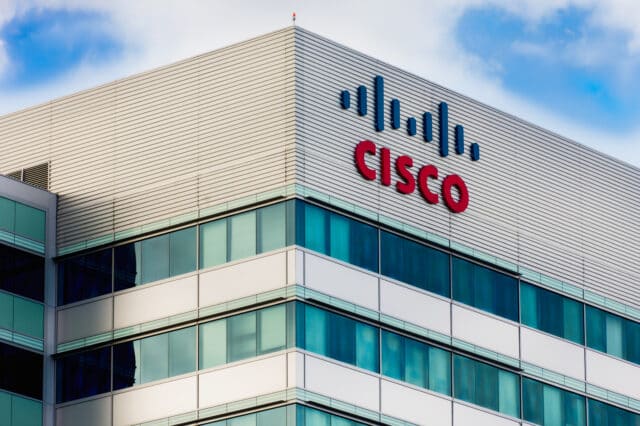A technical overview of Cisco IoT part 3: Security essentials & industrial applications

Following the second installment of this Cisco IoT series regarding IoT networking and security supported by Cisco's innovative hardware offerings, this next discussion explores related key topics that are essential for understanding and implementing IoT solutions effectively.
This comprehensive overview will cover critical aspects such as IoT security, operational technology visibility, and industry-specific use cases. By examining these elements, readers will gain a clearer picture of how Cisco's advanced IoT solutions can enhance security, improve operational efficiency, and drive business innovation across various sectors.
SEE ALSO:
- A technical overview of Cisco IoT: Routing and switching
- A technical overview of Cisco IoT part 2: Hardware
IoT and Security
A paramount component of IoT networks, the importance of robust security measures cannot be overstated, especially considering the potential risks associated with compromised industrial machinery. Cisco offers extensive documentation to guide organizations toward better industrial security practices. A comprehensive resource can be found here.
Key Aspects of IoT Security
- Visibility into OT Assets and Activities:
- Understanding the operational technology (OT) environment is crucial. Visibility into OT assets and activities helps organizations maintain control and secure their infrastructure.
- Segmentation of IoT Networks:
- Segmenting IoT networks is a vital security strategy. Initially, it may be practical to place all IoT devices into a single segment. However, further refinement might involve segmenting by security trust level or even by vendor to limit the impact of potential breaches.
- Cisco Secure Equipment Access (SEA):
- Cisco SEA provides identity-based secure access to IoT devices through a gateway agent running on IoT routers and switches. It includes features such as identity verification, role-based access, security posture checks, and audit trails. The enhanced version -- SEA Plus -- offers additional flexibility with native asset clients, VPN-like controlled communication channels, and support for IP-based applications.
- IoT Operations Dashboard:
- This tool secures remote equipment access, manages data collection and transfer, and oversees IoT router deployment and monitoring. It also integrates with Industrial Asset Vision for LoRaWAN sensors.
- CyberVision:
- CyberVision enhances IoT security by providing asset visibility, security posture assessment, and deep packet inspection. It simplifies traffic monitoring and segmentation, offering features such as risk scoring and integration with CMDBs like ServiceNow and SIEM systems like Splunk. More details can be found here.
- New Capabilities in CyberVision:
- Cisco has added Wireless Backhaul Support to CyberVision, which helps in deploying and monitoring wireless backhaul devices in Cisco URWB (Ultra-Reliable Wireless Backhaul) mode.
- Cisco Firewall in Industrial Form Factor:
- Cisco offers a firewall designed specifically for industrial applications, providing enhanced security for IoT networks. More information can be found here.
IoT Utilization Across Industries
IoT also presents significant opportunities in securely supporting the internal needs of modern businesses, especially when it comes to keeping pace with the ever-evolving technology advancements of today’s highly digital environment. IoT’s cutting-edge capabilities offer inherent value for numerous critical, intricate and common business functions, including cybersecurity, complex management, skilled staffing, and provisions for numerous remote locations and sensors.
This innovative technology’s expanding impact provides powerful solutions across a variety of business sectors, like healthcare and retailing, by offering valuable security and cost-saving benefits while enabling new capabilities such as better inventory management and product improvement. The dynamic business opportunities offered by IoT demonstrate its vast potential to revolutionize industries that range from manufacturing to transportation, and beyond.
Real-World Applications -- Secure Roadways
A tangible example of IoT’s diverse application from an industry-specific standpoint can be seen in the following use case. Cities and transportation agencies are preparing for a variety of immediate and emerging advancements -- from connected vehicles to sustainable infrastructure and vehicle-to-everything communication -- that will completely transform traditional roadways and the way people commute. Cisco's secure roadway solutions offer visibility, zero trust, and secure remote access -- providing the streamlined, tech-enabled, and future-proof management necessary for increasing roadway device scales with limited staffing.
Benefits:
- Improved Traffic Flow: Enhanced connectivity and monitoring lead to better traffic management and reduced congestion.
- Remote Troubleshooting: Remote access capabilities allow for efficient problem-solving and maintenance.
- Regulatory Compliance: Solutions are designed to meet regulations like TSA (US) and NIS (EU).
Cisco's industrial routers and switches provide active discovery and deep packet inspection, integrated with the Cyber Vision Center, streamlining the visibility and detection process without the need for complex traffic mirroring.
Conclusion
IoT security requires a combination of traditional network security practices and specific tools to address this technology's unique challenges. Segmentation and isolation are essential strategies due to the varied familiarity of IoT device vendors with network security. As IoT continues to expand, organizations must adopt comprehensive security measures to protect their infrastructure and capitalize on the diverse applications that IoT presents. By leveraging these advanced technologies, businesses across industries can unlock new capabilities and drive significant innovation.
For additional industrial/IoT security topics, Cisco's blog on industrial security provides further insights. Relevant resources include the Cisco Industrial Security Design Guide and other documents found here.
Image Credit: Ken Wolter / Dreamstime.com
With over 30 years of experience in networking, BlueAlly Architect and Technology Writer, Dr. Peter Welcher is a highly respected Cisco expert who not only assisted in developing the original Cisco IOS CLI but has taught, developed and co-developed several Cisco courses over the years.
